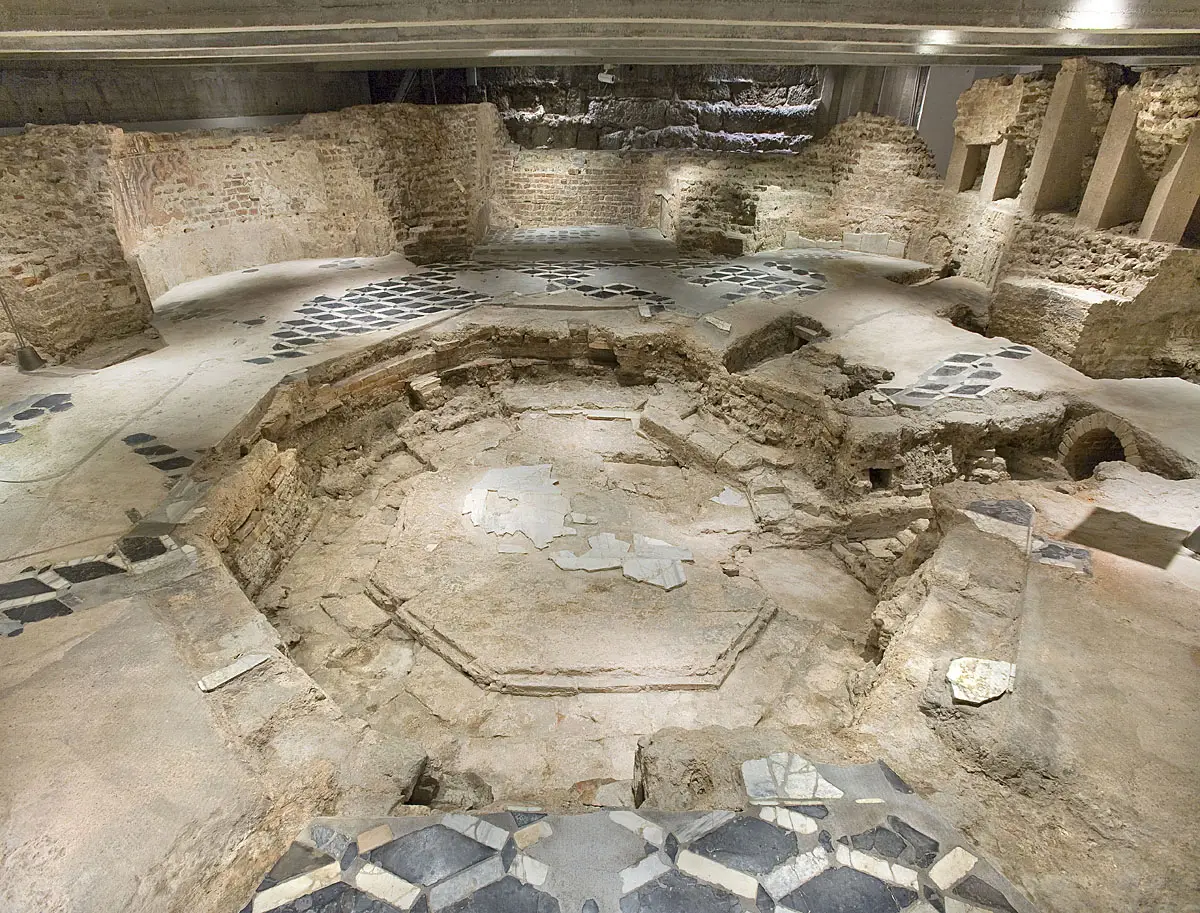There is a Milan of secret, almost hidden places, waiting to be discovered. Beyond Corso Buenos Aires, beyond the center and the most well-known places, the “secret Milan” tells of a city rich in history. Let’s find out together which are the secret beauties of Milan that are worth exploring.
Leonardo’s Vineyard
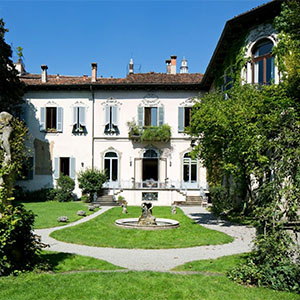
A few steps from the refectory adjacent to Santa Maria delle Grazie which houses the famous Leonardo’s Last Supper, there is the Casa degli Atellani which behind it hides the vineyard that was donated to Leonardo da Vinci by Ludovico il Moro. This is why it is commonly called “Leonardo’s vineyard“. It is located behind the elegant fifteenth-century residence and has recently been restored to its original splendor.
The Historical Archive and Burial Ground of Ca’ Granda
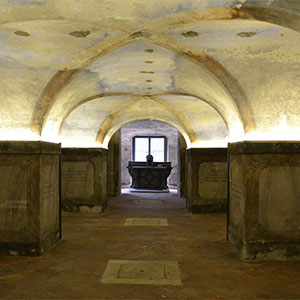
Another little-known place in Milan is the Ca’ Granda Historical Archive which contains the documents of the Ospedale Maggiore from the fifteenth century to the present day. It can be seen on the guided tour which also includes a visit to the catacombs and the Ca’ Granda burial ground.
Day Hotel Venice
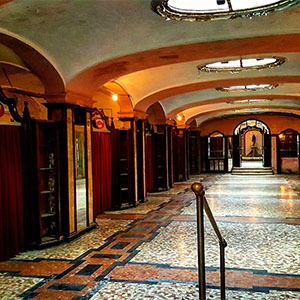
How about visiting a little gem of underground and hidden Milan? Let’s talk about the Albergo Diurno Venezia. It is a center dedicated to personal care, where travelers and citizens could restore themselves after a trip or after work. The Albergo Diurno Venezia was opened in 1926. Consisting of a large colonnaded hall covered in marble and art deco style boiserie, it also had a spa area and rooms dedicated to the care of people. Today it is closed to the public but can be visited during exclusive visits organized by the FAI – Italian Environment Fund.
Borromeo Palace
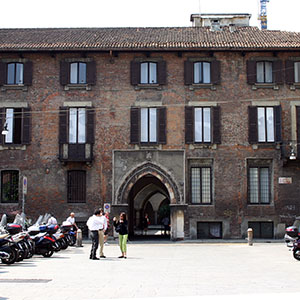
Another place that is part of the secret Milan circuit is the Palazzo Borromeo. We are talking about the residence of one of the richest families in the Duchy of Milan. This palace was built in late Gothic style and completed in the fifteenth century, it houses one of the most elegant private courtyards in Milan.
La Cappella di San Bernardino alle Ossa
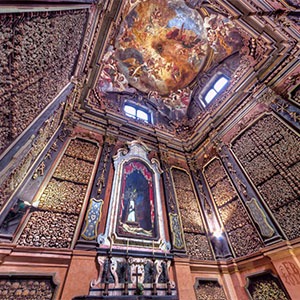
The chapel of San Bernardino alle Ossa is one of the most characteristic and magical places in Milan. Halfway between sacred and profane, the chapel houses hundreds of skulls and bones. We are talking about human remains that were found in the foundations of the church after the collapse of the bell tower in 1642. At that time it was decided to reuse the remains to form Rococo style decorations. Most likely the bones are of the deceased from the nearby Maggiore Hospital, although according to some they are the remains of saints or martyrs. San Bernardino alle Ossa is one of the most interesting stops to make if you are looking for hidden places in Milan.
The Madonna of the Apron
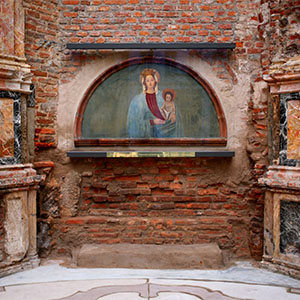
Near the Church of Santa Maria alla Porta you can visit the remains of the altar and the fresco of the so-called Madonna del Apron. The place to see this wonderful work, the street of the same name in Santa Maria alla Porta, is easy to reach but despite this, the altar of the Madonna del Grembiule is one of the lesser-known places in Milan. Even if not perfectly intact, the fresco has a unique charm.
The “Ca’ de l’Oreggia”
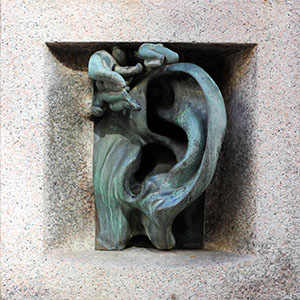
In Milan, just outside Villa Necchi Campiglio, in via Serbelloni 10, near the main door of Palazzo Sola Busca there is “Ca’ de l’Oreggia”. That is, an ear protruding from the wall is nothing other than a bronze intercom made by Adolfo Wildt. This “ear” was built in the 1930s and was one of the first examples of intercoms in the city: it is very nice and deserves a mention!
The pink flamingos of Villa Invernizzi
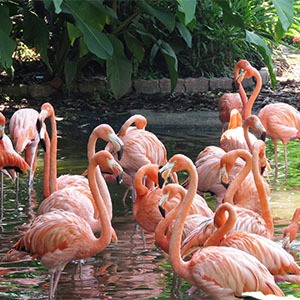
If you peek between the hedges that hide the facade of Villa Invernizzi, in Via Cappuccini 7 in Milan, you can discover a colony of pink flamingos. In the private garden of the well-known Villa, around a pond, these unique animals live. You can take a truly special photo!
The cannonball and the bomb shelters
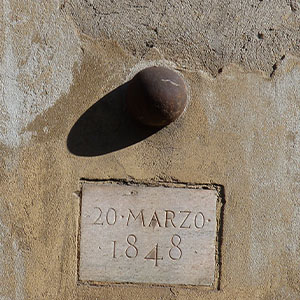
Do you want direct testimony of the Milanese revolts against the Austrians? You can find evidence of a cannonball stuck in the wall lying in Corso di Porta Romana. This is a sign of the Five Days of Milan in 1848. Isn’t that enough for you? Do you want more evidence of how the war changed the face of the city? Well, many don’t know that during the Second World War many cellars were used as air raid shelters. Among these places in hidden Milan are the anti-aircraft shelter No. 87 and the Piazza Grandi shelter, which could accommodate up to four hundred civilians. There are others in via Pace or via Vasari. Here the arrows with the writing “US” are still visible on the external walls of the houses, which indicated the “Emergency exits”.
Quadrilatero Square
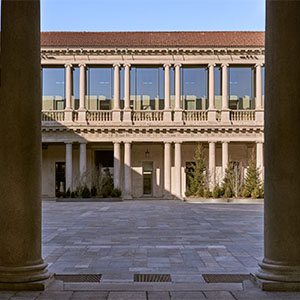
In Corso Venezia 11 there is an “almost” secret square behind a Baroque door. It is the courtyard of the former Archbishop’s Seminary, which once few had the privilege of attending. Since 2023, this space has become a walking place that connects Corso Venezia to Via Sant’Andrea. It has been renamed “Piazza del Quadrilatero” and is hidden among the luxury shopping streets of Milan.
The lift and the episcopal complex beneath the Cathedral
Among the jewels of secret Milan there is no shortage of stories linked to the Duomo. In the Milanese cathedral there is an ancient lift from the 1600s which is activated only twice a year, for the Rite of the Nivola. This elevator holds a Nail of the Crucifixion. Then, on the central door of the Cathedral there is the statue that inspired the Statue of Liberty in New York. It is the New Law by Camillo Pacetti, created in 1810, and it is said that it inspired Frédéric Auguste Bartholdi, author of the most famous sculpture-icon of New York. Finally, many do not know that where the Cathedral stands today, in the past there was an episcopal complex made up of the baptisteries of Santo Stefano and San Giovanni alle Fonti and the three basilicas vetus, minor and nova, the remains of which can be admired.
The House of the Rabbi
A secret and little-known place in Milan is the Rabbi’s House. Some call it “the Dutch” due to the style of architecture that recalls the typical Northern European one. It is a house in via Carlo Poerio 35 which is one of sixteen identical “770 houses” built in different cities around the world by the Orthodox Jewish community of the Lubavitchers. The symbolic residence deserves at least a snapshot: the House of the Rabbi in Milan is the only one present in Europe.
The “Burano” of Milan
If you want to see the “hidden” side of Milan, then you can’t miss a trip to Via Lincoln. It is a private road of only a few meters, but very colourful. In fact, it is known as the “Milan Burano”. In this particular area of the Lombard capital, there are clubs and restaurants for lunch or dinner. In Corso XXII Marzo you can also see the famous Suffragio market and the mural dedicated to Sant’Ambrogio the beekeeper. A true homage to the industriousness of the Milanese.
Vignale Residence
One of the jewels of Art Nouveau Milan that not everyone has had the honor of seeing is the Vignale Residence. It is a historic residence built at the beginning of the twentieth century at the behest of an Austrian prince, characterized by the presence of sumptuous halls and overlooking the internal garden. The Residence has elegant and refined furnishings and contains the charm of its era of birth.
Crypt of San Giovanni in Conca and the Crypt of the Holy Sepulcher
What remains of the Basilica of San Giovanni Evangelista is the only example of a Romanesque crypt in the city of Milan. Anyone who loves ancient religious culture cannot fail to visit it. The same goes for the Crypt of the Holy Sepulchre, which has recently returned to being open to visitors after over fifty years of restoration work. The Crypt of the Holy Sepulcher and the Crypt of San Giovanni in Conca are two unique places that best represent the “secret Milan” and are the best archaeological evidence present in the city area.
The House of Omenons
The House of Omenoni is located in the street of the same name at number 3. Just 500 meters from the Duomo and the Teatro alla Scala, on the facade of this house there are eight giants and they stand out on Palazzo Leoni-Calchi. Many visitors who are in Milan for a few days do not even know of the existence of this beautiful building, a real jewel that is part of that “hidden” part of the city. But who are the Omenons? These imposing male sculptures represent the lineages of the defeated barbarians – Svevo, Quado, Adiabene, Parto, Sarmata and Marcomanno. We are referring to figures inspired by those of ancient Rome, very particular and suggestive.
The mysteries of Palazzo Acerbi
Palazzo Acerbi is located on Corso di Porta Romana 3. By taking metro 3, Missori stop, you will discover a unique place: the house of the devil. According to the chronicles of 1630, the aristocrat Ludovico Acerbi lived in this building. For many, he was the devil himself. Why was he considered the devil? The eccentric used to travel aboard a carriage pulled by black horses and persisted in organizing parties and dances, despite the plague raging in the streets of Milan. According to those in the know, even at the height of the disease, when the plague seemed to strike everyone, the only ones immune were him and his guests. This became a clear indication of a demonic presence and from there the other oddities of Palazzo Acerbi were noticed. First of all, the presence of a cannonball set on the facade which dates back to the battles of the glorious five Days of Milan in 1848.
The Devil’s Column
In addition to Palazzo Acerbi, there is another place in Milan where the devil would have left his evil hand. Outside the Basilica of Sant’Ambrogio, there is a severed stone column with two clearly visible holes. Legend has it that Lucifer’s horns are imprinted on that column. In practice, in the battle between the devil and Saint Ambrose, the former was thrown to the ground in the fight and his horns “pierced” the column. The strong smell of sulfur that can be smelled in this area also encourages the spread of this story.
The secret courtyard of Corso Magenta
A part of Milan that is “secret” to say the least is the one found in Piazza Sant’Ambrogio in the direction of Castello Sforzesco, along Corso Magenta. If you are in this area we recommend you take a closer look at “Casa Rossi”. A place that, beyond the name, has nothing conventional. Entering number 12 of Corso Magenta, positioning yourself in the center of the internal courtyard accessible to the public, if you look up you see something special. That is, the five-storey architecture, designed by pillars, capitals and windows, frames a portion of the city sky in the shape of a perfect octagon. It is a very tasty glimpse that will show you the mastery of the construction and also its beauty.
The Igloos of the Maggiolina district
The igloo houses designed by the engineer Mario Cavallè represent a peculiarity of Milan. They are one of the most evocative residential experiments in the city. They are located in via Lepanto, in the Maggiolina district (M5 Marche or Istria). The so-called “igloos” were built after the war as temporary housing units. These houses were used to house families displaced after the bombings of the Second World War. Currently, only two houses have maintained the original igloo layout, but they continue to attract many attentive tourists.
How and when to “discover” the secrets of Milan
It’s always the right time to discover the other side of Milan. Anyone who decides to visit the city and rents a luxury apartment in the centre, in Corso Buenos Aires or in any other area of the Lombard capital, just has to leave to reveal the secrets of this magnificent metropolis. The comfortable and efficient Milanese public transport will help you, within a few hours, to visit every side of the capital, even the most hidden ones, and to discover all its curiosities. You will be amazed by the beauty of the hidden areas of Milan!


